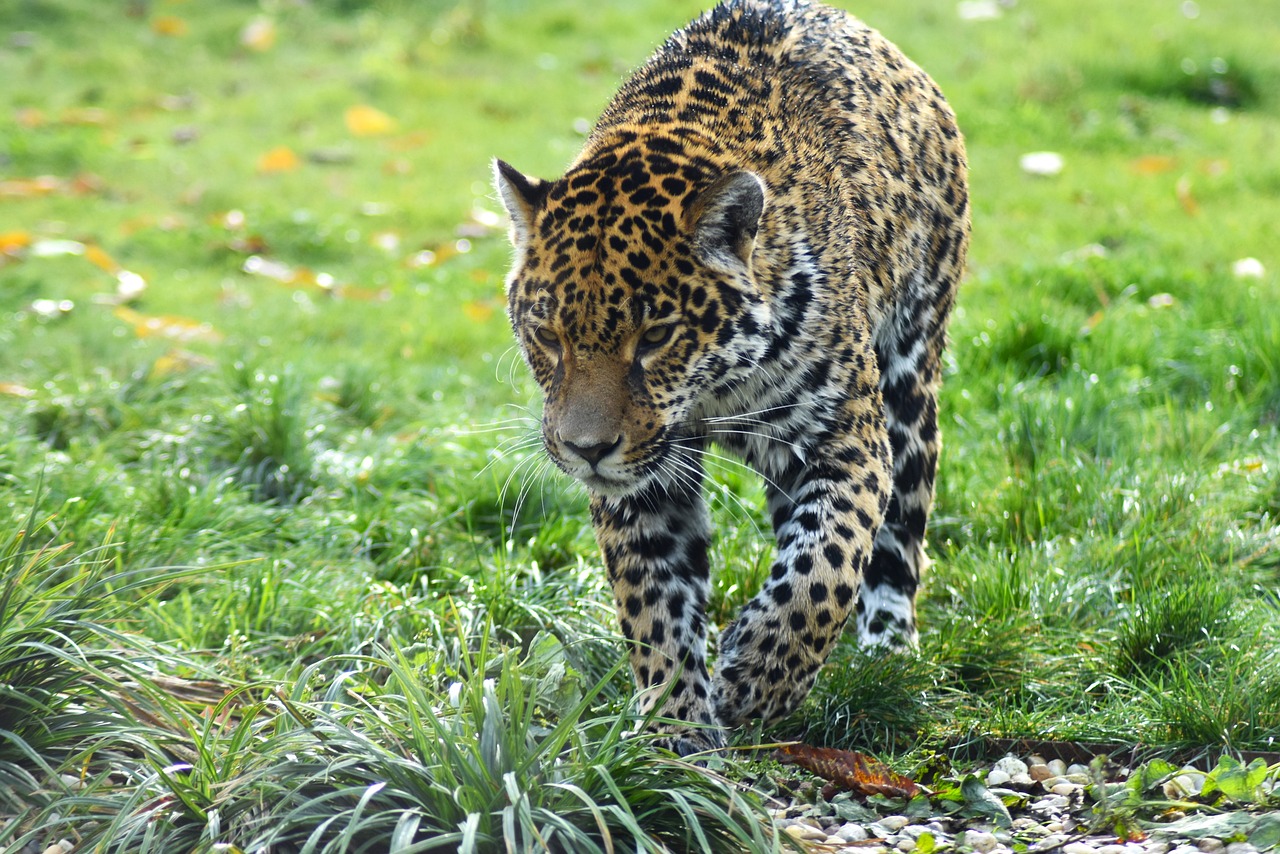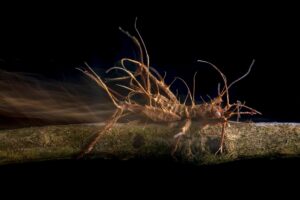 Pin
Pin Photo courtesy of Freepik
“The world is full of obvious things which nobody by any chance ever observes,” a clever detective once noted, and he might have been speaking of the natural world itself. While we rush about checking our watches and counting our coins, the earth beneath our feet is conducting the most peculiar business. Trees are chatting through underground networks made of fungus. Tiny winged creatures are reading invisible maps written in sunlight. Water is climbing upward when all sensible liquids should tumble down, and doing so with such grace that forests depend upon this upside-down fountain.
These aren’t fairy tales or fevered imaginings—they’re as real as your morning coffee, though considerably more peculiar. The trouble is, we’ve all grown rather too practical, too convinced that the world has shown us all its cards. A wise soul once wrote, “In every walk with nature, one receives far more than he seeks,” yet most of us barely glance up from our boots. We see green things and moving things and wet things, but we miss the extraordinary machinery humming along behind the curtain. Once you learn to look properly—not with sensible eyes but with curious ones—the whole world tips sideways and becomes new again. The ordinary reveals itself to be quite extraordinary, and suddenly you’re standing in the middle of wonders you’ve walked past a thousand times without seeing.
Table of Contents
1. Trees Talk Through a "Wood Wide Web" (And They're Quite Chatty)
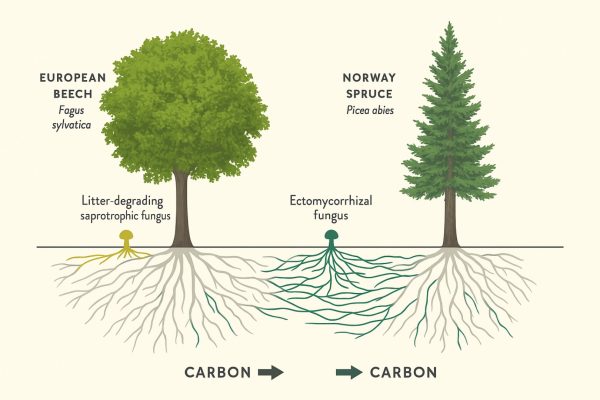 Pin
Pin Photo courtesy of Chat GPT
Beneath every forest floor, there exists a conversation you cannot hear—a gossip network more tangled than any telephone wire, more generous than any neighbor you’ve ever met. Trees, those silent giants we lean against during picnics, are actually connected through an underground system of fungal threads called mycelium. These thin, white strands weave between roots like nature’s own internet cables, allowing trees to send messages, share nutrients, and even warn each other of danger. A mother tree, tall and ancient, can recognize her own offspring through this network and send them extra sugars when they’re struggling in the shade. When one tree is attacked by insects, it releases chemical signals through the fungi, and nearby trees receive the message and begin producing defensive compounds before the pests arrive. It’s rather like a neighborhood watch program, except everyone is rooted in place and communicating in chemicals.
The scientist who discovered this called it the “Wood Wide Web,” and the name fits rather perfectly. What makes this especially peculiar is that the fungi aren’t working for free—they take a portion of the tree’s sugars as payment for their courier services. It’s a business arrangement that’s been running smoothly for roughly 400 million years, long before humans invented the concept of trade. “In nature, nothing exists alone,” the naturalist Rachel Carson once observed, and this hidden network proves her point beautifully. The forest isn’t a collection of individual trees competing for sunlight—it’s a cooperative, a community, a conspiracy of roots and fungi working together in ways we’re only beginning to understand. Next time you walk through woods, remember: you’re standing atop a conversation.
2. Salmon Remember Their Birthplace by Smell (A Nose for Home)
 Pin
Pin Photo by Line Knipst
A young salmon, barely longer than your finger, tumbles into the ocean and vanishes into the blue. Years pass—two, three, sometimes five—while it swims thousands of miles through open water, dodging seals and sharks, growing plump and strong. Then one autumn day, something stirs inside its mind like a half-remembered song. It turns around and begins swimming back, navigating across vast stretches of ocean with no map, no compass, and no guide except a smell it hasn’t encountered since it was a fingerling. Somehow, impossibly, it finds the exact river where it was born, then the exact stream, then the exact gravel bed where its life began. Scientists have marked salmon and tracked them across the Pacific, and the fish return with astonishing accuracy, as though following an invisible thread tied around their hearts.
The secret lies in their sense of smell, which is roughly a thousand times more sensitive than yours. When baby salmon first hatch, they imprint on the unique chemical signature of their home stream—a particular blend of minerals, plants, and soil that exists nowhere else on earth. This scent memory stays locked in their brain through all their ocean wanderings. As they swim back toward the coast, they taste the water constantly, following the faint trail of their childhood river like breadcrumbs leading home. “We do not remember days, we remember moments,” the writer Cesare Pavese noted, and for salmon, that first moment in their home stream becomes an olfactory lighthouse guiding them through years of darkness. The truly remarkable bit is that they can detect their home water even when it’s diluted to one part per million in the ocean—like finding a single drop of perfume in an Olympic swimming pool. Memory, it turns out, doesn’t always live in the mind. Sometimes it lives in the nose.
3. Bees Dance to Give Directions (And They're Surprisingly Precise Choreographers)
 Pin
Pin Photo courtesy of Pixabay
If you shrink yourself down small enough to attend a bee meeting, you’d witness something rather like a tiny ballet performance—except this dance isn’t art, it’s a map. When a forager bee discovers a patch of flowers bursting with nectar, she flies back to the hive and immediately begins what scientists call the “waggle dance.” She runs in a figure-eight pattern on the vertical honeycomb, waggling her bottom furiously during the straight middle section. The other bees crowd around her, touching her with their antennae, reading the directions encoded in her movements. The angle of her waggle-run compared to straight up tells them which direction to fly relative to the sun. The duration of her waggling tells them how far—roughly one second of waggling equals one kilometer of flight. If she waggles enthusiastically and for a long time, she’s essentially shouting, “The flowers are abundant and far away!” A shorter, calmer dance means “Close by, not much nectar.”
What makes this utterly remarkable is the precision involved. Bees can communicate the location of food sources up to six miles away with accuracy that would make a GPS jealous. They account for wind direction, the sun’s movement across the sky, and even correct their angles as the day progresses so their hive-mates don’t fly in outdated directions. The Austrian scientist Karl von Frisch spent decades decoding this language, and when he finally cracked it, the scientific community could hardly believe that such tiny brains could perform such complex calculations. “The hum of bees is the voice of the garden,” Elizabeth Lawrence wrote, but it’s more than pleasant background music—it’s a conversation in geometry and time. These little creatures, whose brains are smaller than a grain of rice, have been using sophisticated communication technology for millions of years. We only invented written directions a few thousand years ago, and we still get lost with them.
4. Monarch Butterflies Navigate by Sun Compass (Without Ever Meeting Their Guides)
 Pin
Pin Photo by Ricardo Olvera
Here’s where things turn truly topsy-turvy: a butterfly no heavier than a rose petal flies from Canada to a specific forest in Mexico—a journey of three thousand miles—despite never having made the trip before. The monarch butterfly that flutters south in autumn is not the same one that flew north in spring. It’s the great-great-grandchild, separated by several generations from any butterfly that knew the route. Yet somehow, without a single flying lesson or inherited map, it finds its way to the exact same trees in the mountains of Michoacán where its great-great-grandparents spent the previous winter. Millions of them converge on a handful of forest groves, covering the fir trees so thickly that branches bend under their collective weight, creating what looks like orange and black waterfalls.
The secret navigation tool sits inside their antennae and brain—a biological compass that reads the sun’s position and combines it with an internal clock to calculate direction. As the sun moves across the sky throughout the day, the butterfly adjusts its flight path automatically, always maintaining the correct southwesterly heading. Scientists discovered this by painting over the butterflies’ antennae with opaque paint, which left them confused and unable to navigate properly. The truly mad bit is that this compass and the migration route are hardwired into their genes, passed down through DNA like an inherited memory that nobody remembers learning. “Nature’s music is never over; her silences are pauses, not conclusions,” the naturalist Mary Webb observed, and the monarch’s journey proves this perfectly. The song continues across generations, each butterfly humming a melody it never heard but somehow knows by heart. They’re born knowing which way to fly, when to leave, and where to land—a genetic instruction manual written in a language older than words.
5. Lightning Creates Fertilizer Mid-Air (A Rather Violent Form of Gardening)
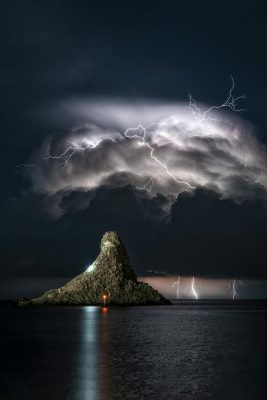 Pin
Pin Photo by Antonio Treccarichi
Every time lightning splits the sky, something extraordinary happens beyond the flash and thunder—the air itself is being transformed into plant food. When a lightning bolt tears through the atmosphere, it carries a temperature five times hotter than the surface of the sun. This intense heat breaks apart nitrogen molecules that normally float about peacefully in pairs, minding their own business. Once split, these freed nitrogen atoms combine with oxygen to form nitrogen oxides, which then dissolve into raindrops and fall to earth.
Plants desperately need nitrogen to grow, but they cannot pluck it directly from the air even though the atmosphere is roughly seventy-eight percent nitrogen. They can only absorb it through their roots when it’s been converted into usable compounds. Lightning performs this conversion service free of charge, delivering roughly one hundred million tons of natural fertilizer to the earth each year through approximately one hundred lightning strikes per second worldwide.
Before humans invented synthetic fertilizers in the early 1900s, lightning was one of nature’s primary nitrogen delivery systems, along with certain bacteria living in soil and plant roots. The ancient farmers had no idea why their crops sometimes grew better after thunderstorms, but they noticed the pattern and considered storms a blessing. They were right, though not for the reasons they imagined. “Thunder is good, thunder is impressive; but it is lightning that does the work,” Mark Twain quipped, and he was more scientifically accurate than he probably realized. Every bolt is performing chemistry at speeds and temperatures we can barely replicate in laboratories, turning the unusable into the essential. The sky is essentially running a massive fertilizer factory, operating continuously since Earth first developed an atmosphere, powered entirely by electricity that appears and vanishes in microseconds. Next time a storm rolls through and you smell that peculiar fresh scent afterward, you’re actually smelling nitrogen oxides—nature’s crop food, delivered express by lightning courier.
6. Water Climbs Upward Against Gravity (The Impossible Journey to the Treetops)
 Pin
Pin Photo courtesy of Chat GPT
If you pour water into a cup, it stays there, obeying gravity like a sensible liquid should. Yet inside every tree, water is doing something rather rebellious—it’s climbing upward, sometimes hundreds of feet into the air, without any pump or mechanical assistance whatsoever. A coastal redwood can stand over three hundred feet tall, and water must travel from its roots all the way to the topmost leaves, defying gravity the entire journey. No heart is pumping this water upward. No muscular contractions are squeezing it along. The tree accomplishes this seemingly impossible feat through a process so elegant that engineers still study it with envy. The secret lies in three forces working together: cohesion, adhesion, and transpiration. Water molecules cling to each other through hydrogen bonds—this is cohesion, like a chain of people holding hands. They also stick to the walls of the tree’s narrow tubes, called xylem—that’s adhesion, like climbers gripping a rope. When water evaporates from the leaves at the top through tiny pores, it creates a pulling force that tugs the entire water column upward, molecule by molecule, in an unbroken chain from roots to crown.
The truly remarkable aspect is the tension involved—the water is actually under negative pressure, being pulled rather than pushed, which seems to contradict basic physics until you understand the molecular forces at work. If you cut into a tree’s xylem, you can sometimes hear a faint crackling sound as air bubbles break these water columns, a phenomenon called cavitation. The tree must constantly repair these breaks to keep the system functioning. “A woodland in full color is awesome as a forest fire, in magnitude at least, but a single tree is like a dancing tongue of flame to warm the heart,” the naturalist Hal Borland wrote, and inside that dancing flame runs an invisible river flowing upward. This hydraulic system has been operating for four hundred million years without requiring maintenance, replacement parts, or electricity. Trees solved the problem of moving water to great heights long before humans invented the first water pump, and their solution remains more efficient than most of our mechanical versions. The impossible, it turns out, happens every single day in every tree you pass.
7. Arctic Terns Fly from Pole to Pole (The Ultimate Round-Trip Ticket)
 Pin
Pin Image by Georg Wietschorke from Pixabay
If you think your daily commute is exhausting, consider the Arctic tern—a seabird no larger than a pigeon that holds the record for the longest migration of any animal on Earth. Each year, this bird flies from the Arctic to the Antarctic and back again, covering roughly forty-four thousand miles in a single annual journey. That’s nearly twice the circumference of the planet, accomplished on wings that weigh less than four ounces. The tern leaves the Arctic summer, chases endless daylight southward, arrives in Antarctica just as summer begins there, then turns around and does the entire journey in reverse. Over its thirty-year lifespan, a single Arctic tern will fly approximately 1.5 million miles—equivalent to three round trips to the moon. They do this not for adventure or curiosity, but for a rather practical reason: they’re following summer around the globe, ensuring they always have abundant food and long daylight hours for hunting.
What makes this migration particularly mind-bending is the route they take. Rather than flying in a straight line, which would be the sensible thing to do, Arctic terns follow a winding S-shaped path across the Atlantic Ocean, riding favorable winds and stopping at productive feeding areas along the way. Scientists only discovered the true extent of their journey in 2010 when tiny tracking devices revealed the complex routes individual birds were taking. Some terns make detours of thousands of extra miles, seemingly exploring or taking scenic routes that serve no obvious purpose except perhaps the sheer joy of flight. “A bird does not sing because it has an answer, it sings because it has a song,” the Chinese proverb tells us, and perhaps the tern flies such extraordinary distances simply because it can. These birds experience more daylight than any other creature on the planet, living in an almost perpetual summer, witnessing two sunrises and two sunsets each year as they swing between the poles. They’ve turned migration into an art form, a grand tour of the planet that makes human world travelers look positively sedentary by comparison.
8. Fireflies Synchronize Their Flashing (A Light Show With No Conductor)
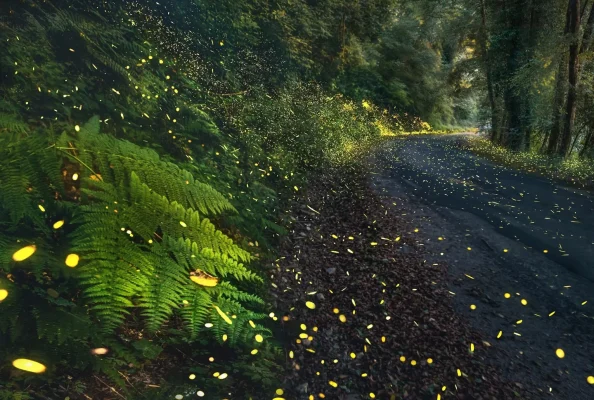 Pin
Pin Photo courtesy of Elena Salvai
In certain forests and riverbanks across Southeast Asia and parts of America, thousands of fireflies gather in trees at night and begin flashing their bioluminescent lanterns. At first, the flashes appear random—a chaotic scatter of lights blinking on and off without pattern or purpose. But then something extraordinary occurs: the fireflies begin to synchronize, adjusting their internal rhythms until entire trees pulse with light in perfect unison, like a living Christmas display orchestrated by invisible hands. Hundreds, sometimes thousands of male fireflies flash simultaneously, creating waves of light that ripple through the darkness. They hold this synchronization for hours, creating one of nature’s most spectacular and puzzling performances. No leader is directing them. No central clock is keeping time. Each firefly is making independent decisions, yet somehow the group achieves perfect coordination.
The mechanism behind this synchrony baffled scientists for decades until they realized the fireflies were using a surprisingly simple rule: watch your neighbors and adjust your timing to match theirs. Each firefly has an internal oscillator, like a metronome ticking inside its body, that controls when it flashes. When a firefly sees nearby flashes, it speeds up or slows down its own rhythm slightly to match what it’s seeing. Multiply this adjustment across thousands of individuals, each responding to their neighbors, and the entire group gradually locks into the same rhythm—a phenomenon mathematicians call “emergent synchrony.” It’s rather like a massive audience clapping after a performance: at first the claps are scattered, but eventually everyone falls into a unified rhythm without anyone consciously trying to coordinate. The fireflies use this synchronized display to attract females, turning courtship into a collaborative effort where the group’s combined light show is far more impressive than any individual flash could be. “In the right light, at the right time, everything is extraordinary,” the photographer Aaron Rose observed, and the fireflies have mastered both the light and the timing to create something that borders on magical. They’ve solved a complex coordination problem using nothing but flashing lights and patience, creating beauty as a byproduct of mathematics.
9. Humpback Whales Sing Songs That Travel Thousands of Miles (And Change Like Pop Hits)
 Pin
Pin Photo courtesy of Oliver Tsappis
Deep in the ocean, where sunlight fades to permanent twilight, male humpback whales are composing symphonies. These songs aren’t simple calls or random noises—they’re complex, structured compositions that can last up to twenty minutes and contain repeating themes, phrases, and patterns remarkably similar to human music. A whale will sing the same song over and over, sometimes for hours on end, hanging suspended in the water column with his head pointed downward as the sound waves radiate outward through the sea. The low-frequency portions of these songs can travel across entire ocean basins, potentially reaching other whales thousands of miles away. In the quiet depths where sound travels far better than light, these songs become a communication network spanning distances that would take weeks to swim. Scientists have recorded humpback songs bouncing off seamounts and traveling across the Pacific, creating an underwater concert hall the size of a continent.
What makes this even more peculiar is that whale songs evolve and change, spreading through populations like musical trends. All the males in a particular region sing essentially the same song during a breeding season, but each year the song gradually transforms—new phrases get added, old ones drop away, the rhythm shifts slightly. These changes don’t happen randomly; they spread from whale to whale across the population until everyone has learned the new version, much like a hit song climbing the charts. Researchers have tracked songs moving progressively across the South Pacific from Australia to French Polynesia, taking several years to cross thousands of miles as whales taught each other the latest version. The songs from the western population gradually replace the eastern songs, then the cycle begins again with new innovations. A scientist studying whale communication noted, “We still don’t know what they’re saying, but we know they’re saying something important.” The leading theory suggests these songs serve multiple purposes—attracting females, establishing territory, or perhaps simply because whales, like humans, have something to say and singing is how they say it. These ocean giants have been composing and sharing music far longer than our species has existed, conducting an ongoing musical conversation in a language we’re only beginning to recognize as language at all.
10. Bamboo Flowers Once in a Century (Then Dies in Perfect Synchrony)
 Pin
Pin Photo courtesy of Wikimedia Commons
Bamboo grows with remarkable speed—some species can shoot upward three feet in a single day, making them the fastest-growing plants on Earth. They spread through underground rhizomes, creating vast forests of genetically identical stalks that are technically all part of the same plant. For decades upon decades, bamboo does nothing but grow leaves and more stalks, appearing to have no interest whatsoever in reproduction. Then, after a precisely timed interval that varies by species—sometimes sixty years, sometimes eighty, and in one species a staggering one hundred and twenty years—every single bamboo plant of that species flowers simultaneously across entire continents. Plants separated by thousands of miles, growing in completely different climates and conditions, all bloom in the same year despite having no contact with each other. After flowering and producing seeds, the entire population dies, leaving behind vast forests of dead stalks and a carpet of seeds that will grow into the next generation. This mass flowering and death is called “gregarious flowering,” and it remains one of botany’s most peculiar mysteries.
What makes this synchronization truly baffling is that it appears to be controlled by an internal genetic clock that counts years with remarkable precision. Bamboo plants taken from Asia and transplanted to Europe or America will still flower at the same time as their relatives back home, proving the timing isn’t triggered by environmental cues but by something hardwired into the plant’s biology. Scientists have proposed various theories for why bamboo evolved this strategy—the mass seeding might overwhelm seed predators like rodents, ensuring some seeds survive simply through sheer abundance. Or perhaps synchronizing guarantees cross-pollination between plants. Yet the mechanism remains stubbornly unclear. How does a plant without a brain or central nervous system count decades? Some researchers believe it involves a molecular oscillator, a biological clock built from genes that tick through cycles and somehow accumulate into years. The poet Matsuo Bashō wrote, “From the pine tree, learn of the pine tree,” suggesting we should let nature teach us on its own terms rather than forcing it into our frameworks. The bamboo’s century-long patience followed by sudden, synchronized death reminds us that nature operates on timescales far beyond our hurried human perspective. These plants are executing a strategy perfected over millions of years, playing a game of survival that requires thinking in terms of centuries rather than seasons. They wait in silence, growing strong, and then commit everything to a single magnificent gamble—all at once, everywhere, at exactly the right moment.
FAQs
No, trees communicate through chemical signals and nutrient transfers via fungal networks underground—it’s silent to human ears but very real.
Yes! Each firefly species has its own unique flash pattern, like different accents or languages. Some flash quickly, others slowly, and some create elaborate light sequences.
Their brains imprint the chemical signature of their birth stream within days of hatching—it becomes a permanent memory marker they can detect years later.
Scientists are working on it using AI and decades of recordings, but we still don’t fully understand their language—it’s incredibly complex and constantly evolving.
Scientists believe the synchronized mass flowering overwhelms seed predators—by producing millions of seeds simultaneously, some survive even if animals eat most of them. The long wait builds strong plants.










